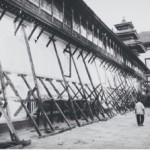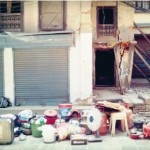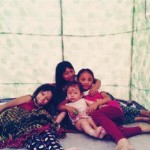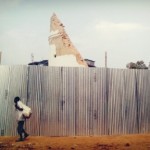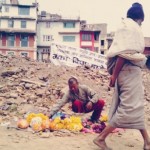Christiane Brosius & Sanjeev Maharjan
Breaking Views. Engaging Art in Post-Earthquake Nepal
with Essays by Dina Bangdel, Sheelasha Rajbhandari, Hit Man Gurung
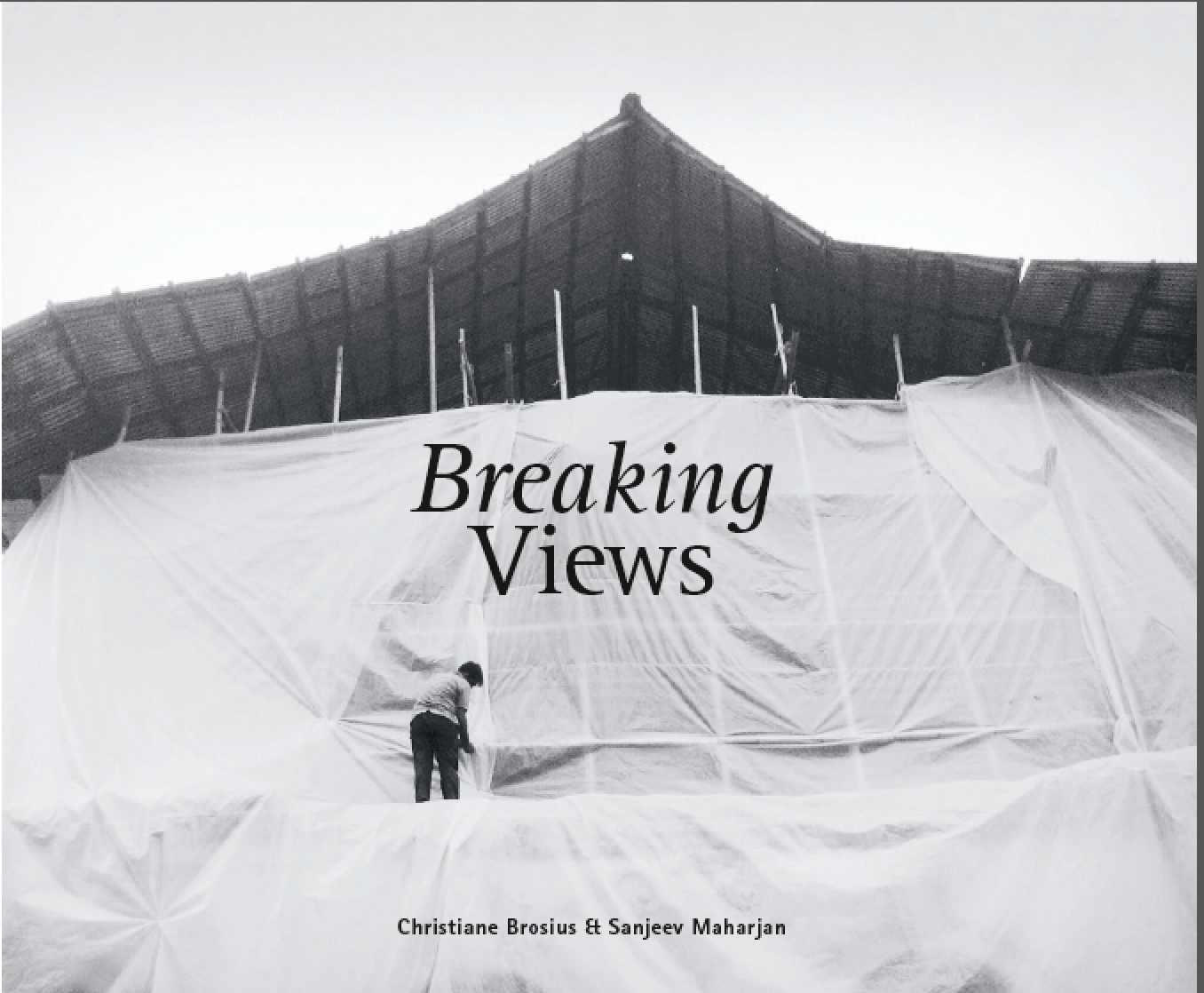
Abstract
How do artists look at their lifeworld after a catastrophe such as the earthquake in Nepal 2015? What does art mean in this context, what can it ‘do’? This book is a collaborative effort responding to these and other questions. It brings together the expertise of artists and curators, an art historian and an anthropologist, to offer a set of perspectives that reflect friction, fragility and precarity as much as perseverance and resilient strongholds. Centre-stage of the book are the photographs, interviews and an installation of artist Sanjeev Maharjan. They are discussed as a careful reflection of those weeks and months after the earthquake hit, but beyond that also invite us to address the broader context of art’s role in society, and of an urbanising world in flux. Lastly, the different views in this book also facilitate the ‘breaking’ of dominant narratives of catastrophe that often overshadow individual experiences by means of heightened sensationalism.
Detailed Description
This book is a collaborative effort that was triggered by these disastrous events of the 2015 earthquake in Nepal. Yet it is not a book that seeks to come to terms with, or ‘measure’, the catastrophe that tore apart so many people’s lives, buildings, aspirations, and futures. Instead, this volume aspires to bring to the surface a range of perspectives, views and voices that reveal an abiding human potential: that the very act of seeing engenders participation, compassion and collaboration rather than a sense of passive helplessness. This is not disaster porn. Rather what ‘Breaking views’ offers is an assemblage of positions that reflect friction, fragility and precarity as much as perseverance and resilient strongholds.
Even as this book is finished, thousands of people still live in temporary shelters, trying to generate the financial capital that will allow them to first demolish and then rebuild their houses, shops and schools, to pay off the debts that were inevitably accumulated in the aftermath, and to heal from the personal and social losses and pain that they endured. The book evolved out of a set of thorny questions: how does one respond to a catastrophe from an art-driven perspective without simply aestheticizing tragedy? How does the artist-as-activist (or indeed the anthropologist) ensure a space for critical reflection and/or intervention in a dramatically changing reality? In Sanjeev Maharjan’s work, we may find tentative answers.
Sanjeev Maharjan is a young, multi-media artist from Kathmandu. His work is both conceptually strong and visually striking, both poetic and participatory. In this book we foreground two series of his work both of which integrate image and text. The first image sequence, “Meanwhile in my Neighbourhood: Earthquake Diary”, belongs to an ongoing project of Maharjan. “Different Time, Different Place” was started in 2013 and reflects the intuitive ways in which Sanjeev Maharjan collects traces, moments and impressions of everyday life, as fellow artists Sheelasha Rajbhandari and Hit Man Gurung propose in their article (this volume), as if he was sketching on paper. This way, Maharjan goes beyond a sentimental manner of collecting glimpses, but takes stock of “his” city, his neighbourhood, his home, and lifeworld by simultaneously connecting it to broader realms of socio-political and urban change. Collecting as act of stock-taking is not then an act executed for the gallery space, but rather an activity to be shared on social media (predominantly facebook, and sometimes instagram). Images are annotated with crisp captions and observations. These visual and verbal annotations of Sanjeev’s walk-alongs reflect conversations, both real and imagined, combining the local expertise that makes the artist an insider with the critical and self-reflexive gaze of the by-stander. The traces that the images are, are anything but static – they are condensed stillness, inertia out of mobility. Moreover, yet they are documents of a physical mobility that has impacted, indeed, has become the backbone, of Maharjan’s work. Lastly, the images, all made with a mobile phone camera, were uploaded on Facebook, to be shared in the social media. To bring them back into the format of a printed book invites an altogether different quality of circulation and consumption, a challenge that we hope to have productively handled.
The second series of images, “Stories from Thulo Byasi”, is, as its title suggests, more intricately entangled in the life of a particular community. This site-specific and community-based work marries the archivist impulse of Sanjeev’s earlier work with an emerging commitment to social activism. Thulo Byasi was one of the most badly damaged neighbourhoods in the heritage city of Bhaktapur in Kathmandu Valley. Here, Maharjan joined a group of artists and other engaged citizens to first of all provide relief to the earthquake affected communities, and then, to slowly engage in co-creation and recovery through long-term projects that culminated in a joint exhibition at the demolished site in September 2015. Maharjan’s installation of a wall, made of bricks from the destroyed houses and dedicated to the residents of Thulo Byasi, was the result of weeks of interviews with local residents. The interviews were accessible over headphones installed in front of the U-shaped brick wall. Some of the bricks had photos of the interviewees and quotes from conversations in Newari or English inserted.
These interviews were conducted in Bhaktapur Newari – we have decided to publish both versions in this book to allow for the ‘original’ voices to be read. An additional transcription of a conversation of the artist with his grandmother, about her experience of the 2015 earthquake, but also her memories of the previous earthquake of 1934, as well as the conversation between Christiane Brosius and Sanjeev Maharjan, are also printed here.
If Sanjeev Maharjan’s work provides the river of this book, two important tributaries are also included here: the art historian and curator Dina Bangdel, who teaches at Virginia Commonwealth University in Doha Qatar, and is currently conducting research on the Nepali art scene, as well as curating exhibitions with Nepali artists both in Nepal and abroad; and the artists Sheelasha Rajbhandari and Hit Man Gurung. Rajbhandari and Gurung, co-founders of the art collective ArTree and 12 Baisakh, were the art directors of Camp.Hub in Thulo Byasi. An essay by Christiane Brosius about the iconography of a disaster and the relationship between seeing, participating and acting, closes the series of views that seek to breaksilences, inertia, and fixed canons of seeing.
Copyright: Sanjeev Maharjan
Christiane Brosius is professor of Visual and Media Anthropology at the Heidelberg Centre for Transcultural Studies. With an academic background in Cultural and Social Anthropology, Art History and Art Education, her focus is on art, media and visual popular cultures in South Asia (mainly Nepal and India) and processes of urbanisation. Publications range from “India’s Middle Class. New Forms of Urban Leisure, Consumption and Prosperity” (2010 Routledge, New Delhi, reprint 2014) to “Empowering Visions. A Study on Videos and the Politics of Cultural Nationalism in India” (London: Anthem Press 2005) and, more recently to the emotional ecologies of Valentine’s Day in India. Research projects cover interdisciplinary approaches to studying single women in Delhi and Shanghai, Active Ageing in South Asia and the field of art production and urbanisation in India and Nepal. Brosius is also co-founder of Tasveer Ghar/House of Pictures: A Digital Network of South Asian Popular Visual Culture.
Sanjeev Maharjan is a visual artist and art educator based in Kathmandu. He received his MFA from Tribhuvan University and a BFA in 2009 from Kathmandu University. Maharjan participated in numerous international and national exhibitions, art festivals, residencies and workshops in The Netherlands, Italy, Belgium, Denmark, India, Bangladesh and in Nepal. He participated in the: Kathmandu Triennale (The City, 2017); India Art Fair (Nepal Art Council Booth, 2017); Coup De Ville Triennale of Contemporary Art, Saint Niklaas, Belgium (2016); ‘”Parallel Realities”: Nepali artists between tradition and globalization’ at the Moesgaard Museum, Aarhus, Denmark (2016), the Kathmandu International Art Festivals (2009, 2012), Photo Kathmandu Photo/Jazz residency curated by Philippe Van Cauteren (2015); Abhisaran-Vijayanagar Residency curated by Amit Jain (2014), “Flooting Peers”, Chittagong, Bangladesh (2013) and the Kathmandu Contemporary Art Center Residency (KCAC, 2010). Solo exhibitions wwere “Portraits from The Shadow” at Siddhartha Art Gallery (2009) and “Repeating Bodies” at KCAC (2010). He is a co-founder of Drawing Room KTM, an artist-run studio and learning space and of Srijanalaya, a nonprofit nongovernmental organization dedicated to alternative forms of art education in Nepal.
